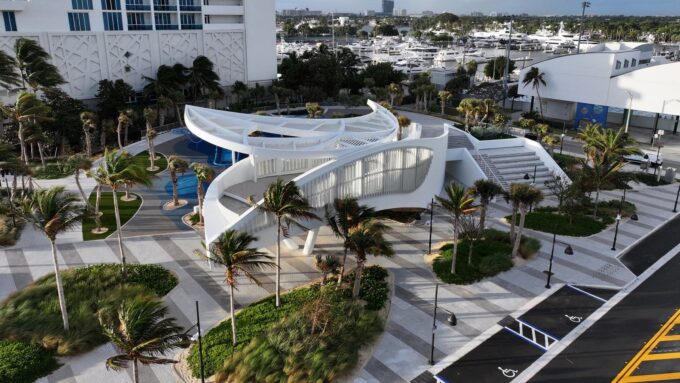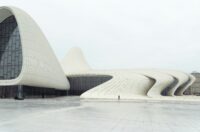- Home
- Articles
- Architectural Portfolio
- Architectral Presentation
- Inspirational Stories
- Architecture News
- Visualization
- BIM Industry
- Facade Design
- Parametric Design
- Career
- Landscape Architecture
- Construction
- Artificial Intelligence
- Sketching
- Design Softwares
- Diagrams
- Writing
- Architectural Tips
- Sustainability
- Courses
- Concept
- Technology
- History & Heritage
- Future of Architecture
- Guides & How-To
- Art & Culture
- Projects
- Interior Design
- Competitions
- Jobs
- Store
- Tools
- More
- Home
- Articles
- Architectural Portfolio
- Architectral Presentation
- Inspirational Stories
- Architecture News
- Visualization
- BIM Industry
- Facade Design
- Parametric Design
- Career
- Landscape Architecture
- Construction
- Artificial Intelligence
- Sketching
- Design Softwares
- Diagrams
- Writing
- Architectural Tips
- Sustainability
- Courses
- Concept
- Technology
- History & Heritage
- Future of Architecture
- Guides & How-To
- Art & Culture
- Projects
- Interior Design
- Competitions
- Jobs
- Store
- Tools
- More
Understanding Having an Architectural Perception in Public Spaces for Better Community Engagement
Explore the transformative power of architectural perception in public spaces. This article delves into how design influences our interactions, shapes community engagement, and reflects cultural identities. Discover the significance of visual elements, spatial arrangements, and successful case studies that create inviting environments.

As we navigate our urban landscapes, it’s easy to overlook the architectural elements that shape our experiences in public spaces. Every building, park, and plaza tells a story, influencing how we interact with our surroundings. By developing an architectural perception, we can enhance our appreciation for these environments and understand their impact on our daily lives.
This awareness not only enriches our personal experiences but also fosters a sense of community. When we recognize the design choices behind public spaces, we become more engaged citizens, advocating for thoughtful architecture that reflects our values and needs. Let’s explore how cultivating this perception can transform our understanding of the world around us and inspire meaningful connections within our communities.

Table of Contents
ToggleUnderstanding Architectural Perception
Architectural perception involves our awareness and interpretation of built environments and their impact on our experiences. This understanding shapes how we interact with public spaces and influences societal dynamics.

Definition of Architectural Perception
Architectural perception refers to how we comprehend and evaluate the design elements of our surroundings, including structures, materials, and spatial arrangements. It encompasses visual, sensory, and emotional responses to architecture. When we recognize architectural features, it enhances our awareness of community design and fosters meaningful interactions with public spaces.
Importance in Public Spaces
Architectural perception plays a crucial role in how we engage with public spaces. Thoughtful design promotes social interaction, accessibility, and safety. Spaces that are aesthetically pleasing and well-planned encourage people to gather, fostering a sense of belonging. By recognizing the architectural elements in our environments, we can appreciate their influence on our daily experiences and make informed decisions regarding urban development. Enhanced architectural perception leads to stronger advocacy for spaces that reflect our community’s identity and values.
Elements of Architectural Perception
Understanding the elements of architectural perception enhances our interaction with public spaces. Key components include visual elements and spatial arrangement, both crucial for fostering engagement and appreciation.

Visual Elements
Visual elements play a significant role in how we perceive public spaces. Colors, textures, and forms contribute to our overall experience. For instance, bright colors can evoke joy, while muted tones create tranquility.
Textures influence tactile experiences. Smooth surfaces, like polished stone, invite interaction, whereas rough finishes can evoke a sense of nature. Forms, such as geometric shapes or organic curves, impact the flow and movement within a space, guiding our paths and shaping our activities.
Architects often incorporate visual elements to create focal points. These focal points draw our attention, fostering curiosity and prompting exploration. Art installations and landscaping serve as effective visual enhancements, enriching our connection to the environment.
Spatial Arrangement
Spatial arrangement directly affects our movement and interaction in public spaces. Effective layouts prioritize accessibility and flow. Open areas encourage socializing, while strategic pathways guide foot traffic.
Zones within public spaces, like seating areas or recreational spots, define usage and promote community engagement. For example, seating clustered around a fountain fosters conversations among users.
Proximity influences the sense of community. Spaces designed to bring people together create a welcoming atmosphere. Moreover, incorporating elements such as greenery can enhance our feeling of safety and comfort, making us more likely to linger and interact with others.
By focusing on these elements, we cultivate a deeper architectural perception, enhancing both individual experiences and community dynamics within public spaces.
Impact on Community Engagement
Architectural perception profoundly affects community engagement by enhancing social ties and celebrating cultural identities. Through intentional design, public spaces become more than places; they transform into hubs of interaction and cultural expression.

Fostering Social Interactions
Thoughtfully designed public spaces encourage social interactions by creating inviting environments. Gathering areas, such as plazas and parks, provide opportunities for conversations and activities. Structures with open layouts facilitate mingling, while elements like seating and greenery invite people to relax and connect. Our awareness of these design components fosters a sense of belonging and encourages participation in community events, from markets to festivals. Ultimately, these interactions strengthen community bonds, promoting collaboration and support among residents.
Enhancing Cultural Identity
Architectural perception plays a critical role in reflecting and enhancing cultural identity within public spaces. Unique designs that represent local history, traditions, and artistic expressions create a sense of pride among residents. For instance, murals or sculptures can celebrate local heritage while fostering a connection between the community and its environment. By integrating cultural elements into public spaces, we cultivate awareness and appreciation for our diverse backgrounds, encouraging inclusivity and dialogue. This embodiment of identity not only enhances our experiences but also promotes a cohesive community that values its unique character.
Case Studies
We examine successful examples of architectural perception in public spaces, illustrating how thoughtful design fosters community engagement and enhances the user experience. Our analysis also highlights key lessons learned from these instances.

Successful Public Spaces
- Piazza San Marco, Venice: This iconic square unites locals and tourists, illustrating how design can create a vibrant gathering spot. Its open layout encourages social interactions while historical architecture enhances the sense of place.
- Bryant Park, New York City: By integrating green spaces in an urban environment, Bryant Park turns a busy area into an inviting retreat. The strategic arrangement of seating and amenities fosters community gatherings and cultural events.
- Millennium Park, Chicago: This innovative park combines art, architecture, and landscape design, promoting interaction and engagement among visitors. Features like the Cloud Gate sculpture act as social and cultural landmarks, drawing diverse groups together.
- Civic Center Park, Denver: The park showcases how public spaces can celebrate local culture through design and art. Ample green areas, pathways, and a mix of activities promote social ties and community involvement, enriching the urban experience.
Lessons Learned
- Engagement through Design: Thoughtfully designed spaces invite interaction. Engaging elements, such as seating and artwork, make areas more appealing and encourage community usage.
- Cultural Representation: Incorporating local history and identity within public spaces fosters community pride. These elements create connections among residents and enhance satisfaction.
- Accessibility is Key: Prioritizing accessibility in the design process ensures that diverse populations can interact and enjoy public spaces. Open layouts and clear pathways improve flow and user experience.
- Flexibility in Use: Successful public spaces offer versatility, accommodating various events and activities. Spaces that adapt to community needs encourage ongoing engagement and participation.
Challenges and Considerations
Architectural perception in public spaces faces several challenges that affect how we experience and interact within these environments. Two significant hurdles include design limitations and accessibility issues.

Design Limitations
Design limitations often constrain how architects conceptualize public spaces. Resources, including budget, materials, and zoning regulations, can restrict creative potential. In many cases, architects must prioritize functionality over aesthetic appeal, leading to uninspired spaces that don’t engage the community. For example, a limited budget may prevent the incorporation of diverse elements like art or landscaping, resulting in areas that lack vibrancy. Additionally, building codes and ordinances can limit design choices, affecting how spaces relate to their surroundings. These constraints may lead to areas that do not effectively promote social interaction or a sense of belonging. Striking a balance between practical requirements and inspirational design often poses a challenge for architects.
Accessibility Issues
Accessibility issues significantly influence our ability to engage with public spaces. Environments designed without considering diverse user needs can create barriers for individuals with disabilities, the elderly, and families with children. Features like uneven surfaces, inadequate signage, or a lack of wheelchair-friendly pathways can hinder mobility, limiting the enjoyment of these spaces. Additionally, public transport accessibility can impact who interacts with these areas, as insufficient links to transit may deter community participation. Ensuring that public spaces are universally accessible fosters inclusivity, allowing everyone to experience and participate in community life. Addressing these issues remains critical for enhancing architectural perception and promoting engagement within public spaces.
Conclusion
Architectural perception plays a vital role in shaping our interactions with public spaces. It influences how we experience our surroundings and engage with one another. By understanding the elements that contribute to architectural perception, we enhance our appreciation for thoughtful design and its impact on community dynamics.
Key components such as visual elements and spatial arrangements are crucial in creating inviting public environments. Our interactions with features like color and texture can transform a basic space into a vibrant gathering spot. Well-designed layouts promote accessibility and connectivity, fostering social engagement and a sense of belonging.
Culturally relevant designs reflect our unique identities and enhance community pride. Spaces that incorporate local history or art encourage dialogue and foster inclusivity. These environments nurture connections and transform public areas into hubs of cultural expression.
Successful examples illustrate the positive impact of thoughtful architectural perception. Venues like Piazza San Marco and Bryant Park showcase how design can enhance user experience and community engagement. These case studies highlight the importance of creating spaces that are not only functional but also celebrate local cultures.
Addressing challenges within architectural perception remains critical. Overcoming design limitations and ensuring accessibility for diverse populations strengthen our communities. By prioritizing inclusive design, we promote participation and enhance everyone’s experience in public spaces.
- architectural influence on behavior
- architectural perception
- architecture and accessibility
- architecture and community
- architecture and public life
- architecture for social interaction
- community engagement
- community-focused design
- designing for community
- engaging public spaces
- human-centered spaces
- inclusive public spaces
- participatory design
- Public Space Design
- public space experience
- public space interaction
- social architecture
- space for public interaction
- spatial perception in architecture
- urban design and engagement
- urban spaces
Submit your architectural projects
Follow these steps for submission your project. Submission FormLatest Posts
Enhancing Urban Life: Best Practices for the Design of Walkways in Urban Areas
Discover the transformative role of urban walkway design in creating safer, sustainable,...
Playgrounds: Landscape Architecture for Inviting Interaction
Playgrounds in landscape architecture are more than spaces for activity—they are environments...
Future Trends in Urban Development: Embracing Sustainability and Smart Technology
Explore the future of urban development in this insightful article that highlights...
Top Sustainable Design Practices for Mixed-Use Public Spaces: Creating Vibrant Communities
Discover how sustainable design practices can transform mixed-use public spaces into vibrant,...












Leave a comment